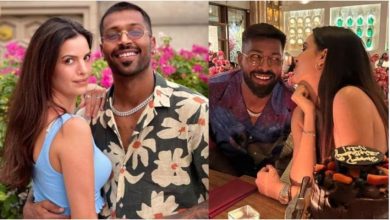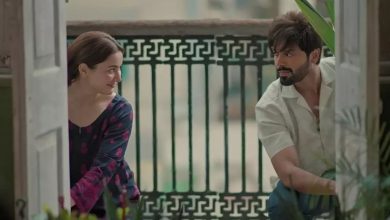30 years of ‘The Lion King’: The circle of life that never ends

It’s hard to believe that 30 years ago, the glowing sun of the Serengeti rose above Pride Rock for the first time, but believe it you must. If you are part of the esteemed subset who saw The Lion King in the cinema fresh out of the studios, then it is very likely that you are also at the advanced age where you try hard to get out of invitations that extend past 9PM.
But your synapses have not withered to the point where you have forgotten just how your heart splintered the first time you saw Mufasa die. If there’s anything this film got wrong, I haven’t found it in thirty years. And with The Lion King being the most successful film on home video, with more than 55 million copies sold, I know I am not alone.
The film that had it all
In terms of riveting action, rising tension, and a mighty king with a liquid baritone, The Lion King has everything you could hope for in a film about, well, lions and/or kings. As kids, we may not have cared about trivial things such as the circle of life, but that didn’t matter. We have a beloved king with James Earl Jones’s honeyed baritone. A father who would lay down his life for his son. A villain whose heart is corroded by jealousy, but whose brains are sadly firing on all cylinders. A brutal premeditated murder. Familial betrayal. Hope rising from the ashes. Friends who are willing to dress up in drag and do the hula to bait hungry hyenas. Finding yourself again. Glorious redemption. An Elton John ballad. Do you really need anything else? I think the only person in film history who found it wanting was my father, whose main complaint was the colour palette.
“Why is everything brown in this film?” he would complain in disgust. The rest of us, however, were unaffected by the use of brown, mainly because we were too busy being affected by Mufasa dying.
Why Mufasa’s death matters
I don’t think there has been any onscreen death in Disney that has had as much of an impact as Mufasa’s murder. Granted, royal Disney parents suffer from a high fatality rate, so Mufasa’s prospects were never bright. Snow White’s parents, Cinderella’s father, Ariel’s mother, Belle’s mother, and Jasmine’s mother, and even Bambi’s mother – need I go on? All of those deaths, however, happen in a gentle, sanitised manner off-screen. More importantly, other than Bambi’s mother, we never set eyes on these parents, so we don’t care whether they died in their sleep or fell into a wood-chipper.
But Mufasa? From the moment Simba is born, we see that he is everything a father should be. He can sideswipe a trio of wayward hyenas with one mighty paw when they threaten his son. His mighty roar sets hearts racing. Simba’s entire body can fit inside Mufasa’s pawprint. The message is clear: Mufasa will always be there to protect Simba.
Alas, not for long. As one of cinema’s greatest villains, Simba’s uncle Scar – played faultlessly by Jeremy Irons – is away with the hyenas finalising the nitty gritty of Mufasa’s upcoming murder, complete with a Nazi dance routine to liven up the atmosphere. Later when Scar’s moment of triumph approaches, there is a part of us that clings to the belief that he will not get away with it.
And then, in a moment of horror, we realise he will. Scar whispers “Long live the King” in Mufasa’s ear before unceremoniously shoving him off a cliff. When Simba screams “No!”, our hearts pound along with his. And when Simba finds his father’s body and seeks shelter under his lifeless paw one last time, our pounding heart shatters then and there. Twinned with a musical score coaxing out the tears that had valiantly stayed put, the pain is acute.
Not another princess film
The Lion King had always been something of an anomaly. When it was released in 1994, Disney was known a lot more for its expertise with princesses than it was with African animals – which was why the studio’s B-team was assigned this lion-oriented mix of Hamlet and Bambi (or Bamlet, if you prefer). The A-team, meanwhile, was tasked with cobbling together Pocahontas, which came out the following year. Compared to The Lion King, right from the storyboard to the music score, Pocahontas fails on every count. Not even leading hotshot of the day Mel Gibson as John Smith, Pocahontas’s hero could save the day. Allow me to put it in terms the layperson can understand. If we imagine, for a second that The Lion King and Pocahontas are both breakfast items, the former is a plate of hot Belgian waffles dripping in maple syrup, and the latter is a bowl of stale bran flakes.
Having said that, you cannot fault Disney for automatically assuming that a princess film would perform well. When The Lion King came out, Disney was smack in the middle of its Renaissance period, attempting to churn out critical and commercial successes. This Renaissance period ended up lasting from 1989 to 1999, and up until the time The Lion King was released in 1994, three out of four successful releases had featured a princess of some description. The Little Mermaid (1989), Beauty and the Beast (1991) and Aladdin (1992) had all wormed their way into animation lore, so it was logical to assume that something brown containing animals would receive mixed success. But sometimes, success comes from the most unexpected places. Such as your B-team.
It also helps if you have Elton John composing your ballad. Is it any surprise that The Lion King won Best Original Song and Best Original Score at the 1995 Oscars? Of course, things could have been very different had Disney proceeded with its original plan of Can You Feel The Love Tonight being sung by a warthog. A horrified John intervened and the ballad was heard in the form we hear it today. Not only did The Lion King have many teachable moments, such as fighting for your song and learning how to be a good parent, I also finally understand what the circle of life truly means. Picking up the torch from where my father left it, I now complain about the updated photorealistic Lion King (2019) being completely devoid of colour. If that isn’t life coming to a full circle, I don’t know what is.





